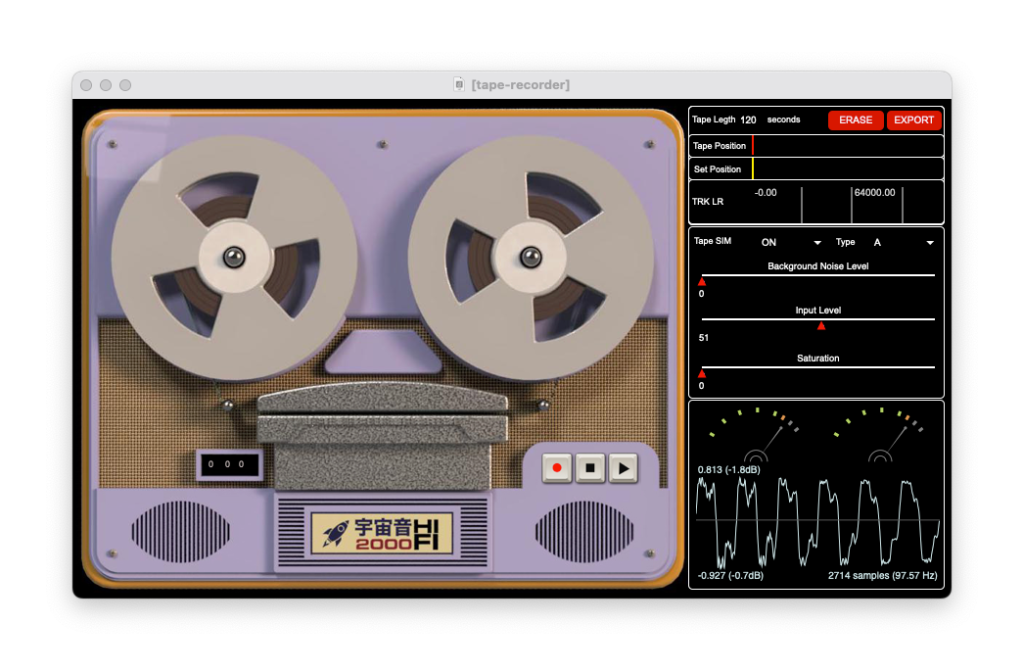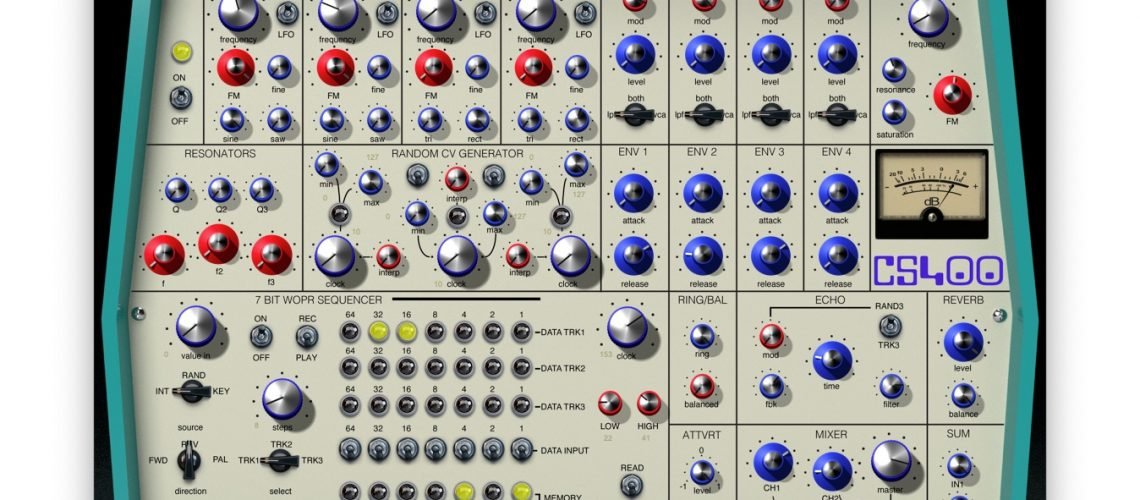128-bit digital sequencer? 1,596 patch points? A combination of a 1970s modular system – and a 1970s hobbyist microcomputer? Composer/artist and engineer Giorgio Sancristoforo has dreamed up a new synth from an alternative universe.
Compusynth is another esoteric wonder from the maker of Berna3 and Gleetchlab. Giorgio continues to create these beautiful, integrated standalone applications – entire imagined studios in a single piece of downloadable software.
It’s is unique in that it merges elements of vintage 70s digital and vintage 70s analog to create a synth you really haven’t seen, borrowed from an alternate timeline. It’s a bit like if Altair had made its own version of the 200 series Buchla, with plenty of twists thrown in.

So, for the synthesis side of things, you get four oscillations with FM and variable waveforms for complex-style results – each switchable between VCO and LFO, which is handy. And you have a nice set of four low-pass gates (more reasonably labeled LPVCA), four envelope generators, a source of u– uh, random CV generator, and resonators. There’s also ring mod, an attenuverter, sum, and mixer.
All of this can be routed through a massive matrix in a separate window. Where things get interesting is the additions.
The memory sequencer is the Altair-inspired bit. This early hobbyist, DIY-style machine had a large front panel with lights and switches, into which you would manually dump binary codes. As a computer interface, it was dreadful. But as a music sequencer – well, then it’s a bit brilliant.
You’ll definitely want to read the (very clear) manual on this one – the 7-bit WOPR sequencer is not like something you’ve likely encountered before. But in addition to the switches, you can use a MIDI keyboard to input values. The advantage of this design: you get a full 128 bits that you can read in the loop, for really complex or long-running patterns.
All of this sounds daft, but Giorgio sent over a build and – damn, this thing sounds utterly amazing. With a lush tape echo in the mix, you get warm, fuzzy, dark sounds. It’s practically worth the price of admission to just dial up a preset and leave it making beautiful drones on your computer for the afternoon. If you do start messing around, there’s plenty of experimentation possible. You can then record the old-fashioned way by calling up a virtual reel-to-reel tape recorder, as with Giorgio’s other vintage-tinged inventions. Or you can route via a virtual audio driver to the app of your choice. No plug-ins here, but then I’d rather have Giorgio brainstorming this kind of thing than going around testing hosts and dealing with plug-in validation.

Specs:
- 4 VCOs
- 4 LPVCA (low pass gate)
- 4 envelope generators
- 1 resonant low pass filter
- 3 independent resonators
- Microcomputer memory sequencer (a la Altair) with 3 tracks
- 1 ring modulator
- 1 attenuverter
- 1 minimum function
- 1 tape echo
- 1 spring reverb
- 3-channel mixer (sum)
- 4-channel mixer with master output
- Tape recorder

19.50€ now for macOS Universal (M1/Intel), with a Windows version promised for next month. Grab it here:
https://www.giorgiosancristoforo.net/




